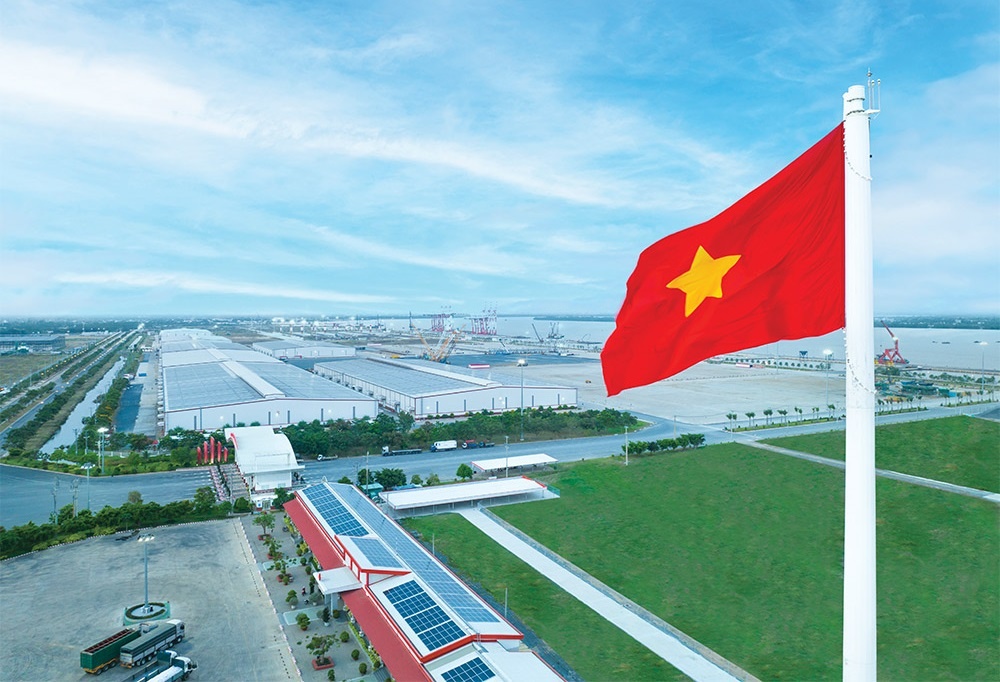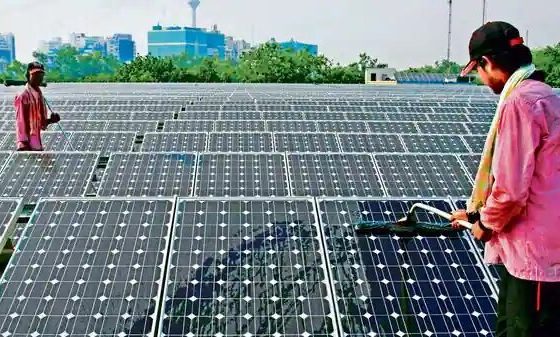Logistics supply chain efficiency on the rise

The expanding consumer market, with abundant supply and a favourable geographical location for penetration and network expansion, is pushing Vietnam’s logistics supply chain to increase efficiency.
At a talk show on increasing the efficiency of logistics supply chain investment, organised last week by VIR in Hanoi, Eric Herding, managing director of DSV Air and Sea Vietnam, praised Vietnam’s efforts in infrastructure development, which has created better conditions for the growth of the country’s logistics system.
Vietnam is actively building new infrastructure projects, such as Long Thanh International Airport, expanding capacity at ports in Cai Mep and Vung Tau in the south, and opening additional deepwater wharves at Haiphong Port in the north to accommodate the increased investment and economic activity in the region. These improvements are crucial as Vietnam positions itself as a critical logistics hub for global supply chains.
“We have a great advantage in terms of geographical location, especially being near China, as global investments are flowing into Vietnam. The plan to build a transit centre here is feasible,” Herding said.
He also noted that Vietnam’s central location within the ASEAN region, along with its proximity to China, offers significant advantages for the country to integrate further into regional and global supply chains.
For DSV Air and Sea, Herding highlighted that the company is experiencing clear growth and sees further opportunities on the horizon. DSV is exploring investments in new equipment and facilities, particularly in areas like renewable energy projects.
“We are ready to seize opportunities and expand operations in Vietnam, including the potential to build more warehouse and distribution centres,” Herding said.
Dr. Yap Kwong Weng, CEO of Vietnam SuperPort, also emphasised Vietnam’s strategic positioning in connecting China with other ASEAN countries such as Cambodia, Laos, and Thailand, enabling it to form a critical link in the regional supply chain. He highlighted Vietnam’s robust position for further growth in the logistics sector.
Moving the sector forward
To enhance and promote sustainable logistics infrastructure, Weng stressed the need for a partnership between the private sector and government. He underscored the importance of a structured policy agenda, stating that the country must move away from bureaucracy to expedite business activities.
“We need to bring in manpower and technology quickly, establish centres of excellence, and create a multiplier effect to spread benefits across provinces,” he said.
Vietnam’s leadership, according to Weng, is well-positioned to move the country forward, and its resilient history adds to the confidence of international investors.
“Private companies are ready to invest and implement their technologies. What we need now is to expedite the logistics development process, including the logistics highway,” he added.
The cooperation between the government and businesses is vital for increasing the efficiency of logistics supply chains. Other essential contributors include associations, universities, research institutes, and asset owners, as well as customers. Each of these stakeholders plays a role in building a seamless and efficient logistics network.
Technological advancements are particularly important for improving logistics in Vietnam. According to Weng, tech that is successful in other countries must be transferred and adapted for Vietnam’s logistics sector. This includes hardware and software solutions, warehouse management systems, robotics, and automated goods retrieval systems, which can reduce manual labour and enhance operational efficiency.
However, the customisation of these technologies is crucial. “We must collaborate to develop new technologies, create markets for logistics growth, and connect stakeholders. This will draw in small- and medium-sized enterprises, financial institutions, and banks,” Weng said. Such collaboration could also create new logistics markets, drawing more businesses and investors to Vietnam.
To further develop as a regional logistics hub, connecting domestic infrastructure with regional counterparts is essential. Contingency plans for supply chain disruptions must also be considered, especially in an era of increasing uncertainty, such as the disruptions caused by the pandemic.
Herding noted that Vietnam must improve connections between regions, industrial parks, logistics zones, and key transport networks, including seaports, airports, roads, railways, and inland waterways.
“The creation of free trade centres will help companies export and import goods more seamlessly and efficiently, reducing transaction costs. Establishing regional distribution centres should be the next step,” Herding said.
To meet the growing expectations of international investors and maintain its competitive edge, Vietnam must develop a sustainable logistics model. Herding noted that inland waterways could be a competitive advantage for the country compared to other markets, especially as environmental concerns continue to influence business decisions.
New investors, whether in logistics or manufacturing, are increasingly looking beyond financial metrics and focusing on environmental standards, as many have made net-zero emissions commitments through their environmental, social, and governance strategies.
A phased approach
As a growing company in Vietnam, DSV is committed to sustainable development, focusing on reducing CO2 emissions across its transportation activities. This involves efforts ranging from the point of receipt at the factory to the final delivery of goods. DSV also has a strong focus on key sectors, including renewable energy, healthcare, pharmaceuticals, and construction.
Vietnam SuperPort is also positioning itself to play a key role in the region’s logistics development. According to Weng, the company is taking a phased approach to expansion, currently focused on building a cargo terminal with the latest technologies to reduce carbon impact. “We plan to create an integrated dry port and terminal that can receive containers from both the north and south and distribute them to target destinations efficiently,” he said.
Plans also include building warehouses for short- and long-term storage, forming a flexible multimodal logistics port that combines storage and distribution processes into a single efficient operation.
According to Precedence Research’s market outlook forecast released in June, the global logistics market size could reach $21.91 trillion by 2033.
In Vietnam, according to figures from the Ministry of Industry and Trade, the logistics market value reached about $40 billion in 2023 and is expected to continue to grow at about 14-15 per cent annually. The logistics industry is currently contributing about 4-5 per cent of GDP, and creates jobs for more than 1 million direct workers.
By 2050, the industry is expected to contribute up to one-fifth of the country’s GDP. The country currently has more than 34,000 businesses operating in the logistics field. Its national logistics capacity index in 2023 ranked 43 out of 139 countries and territories, and fifth among ASEAN countries, up 21 places compared to 2016.
Source : vir.com.vn



